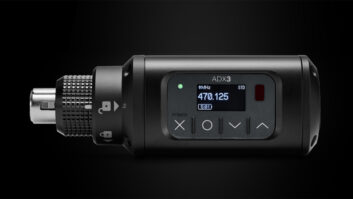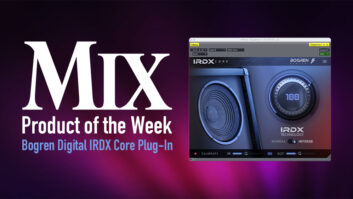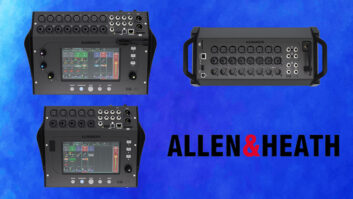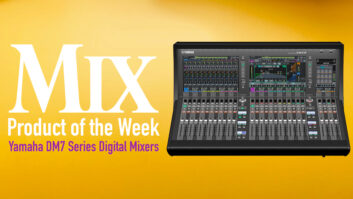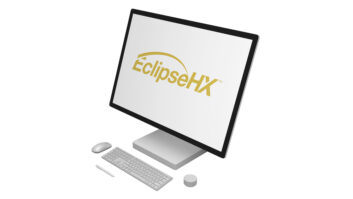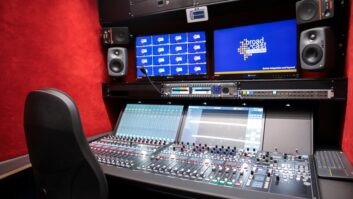The Akai DD8 random-access digital film dubber is designed to be used in place of traditional mag machines and as a plug-and-play replacement for tape-based recorders and playback machines. It records to and plays from 2.6GB magneto-optical (MO) disks or removable hard drives and now offers 24-bit/96kHz resolution.
At Todd-AO East in New York City, our mixing/screening room accommodates all digital formats, as well as 16/35/70mm capability. We recently added another ten Akai DD8s for a total of 28 units. Many of our clients now bring in elements on MO drives; some even bring MOs for stem screenings.
THE QUICK CHANGE ARTISTIn the past, when we’d make changes on mag, we had to first re-create that stem-recall all the automation, make sure all our elements were up, with all the reverbs and EQs-and punch into that stem. Now, we lay our stems out so that the Foley is spread out separately from the backgrounds, which are in turn separated from the specific effects. When the client wants to fix something-lower a gunshot, for example-we can just highlight the gunshot and lower it right on the stem, without having to go back to the original elements. Now we save 70% of the time it used to take us to do fixes.
THE 8-TRACK CLIPBOARDWhen a client doesn’t like a particular music cue we’ve mixed into a stem, instead of erasing that cue and adding a new one, we use the DD8’s DL1500 controller to move the original cue, with all the crossfades and moves in place, over to “virtual tracks” 9 through 16, and then record the new cue on tracks 1 through 8. It’s like having an 8-track clipboard-tracks 9 through 16 can be recalled and put right back into the mix if the client changes his mind.
ON THE MOVEIf you want to move something, like a piece of dialog that’s slightly out of sync, the DD8 allows you to move it a subframe at a time, or a frame at a time. There are two ways to move the section: by highlighting the section with an In and Out key and “nudging” it, or by going to the Move page. In general, it is better to use the Move page since you have to specify the amount of the move, whereas when nudging it is easy to forget how many button pushes were needed. Also, as you nudge, you tend to overlap what you did after that move and you cannot recover audio that was overlaid, whereas the Move page Undo function will restore overlaid audio.
MONITORING FROM AFARIf there is only one monitor for the DD8, it may be difficult to see the punch-in/out point-shown by a thin green line-when sitting at the other end of the console. However, if you put all the keys in Edit Mode, all the tracks will be edit-ready and all the in and out points will display in green, clearly visible from some distance.
KEEPING TRACK OF TRACKSDocumentation is important, especially if a project is conformed two or three times. With three stems and multiple elements to be kept track of, it makes sense to provide as much information as possible in the file names. But a file name can be only ten characters long, so it is important to use those ten characters in such a way that the file name reflects its version and status. At Todd-AO we mark one file as the final file, and any revisions to that file are indicated in the file name. Sound One, Todd-AO’s sister facility, has devised a file system that uses the ten characters as a code; one or two letters indicate that the file is a premix, a stem, a final, a transfer, or a Foley track, etc. Once familiar with such a coding system, it becomes second nature to label files accurately and informatively.
